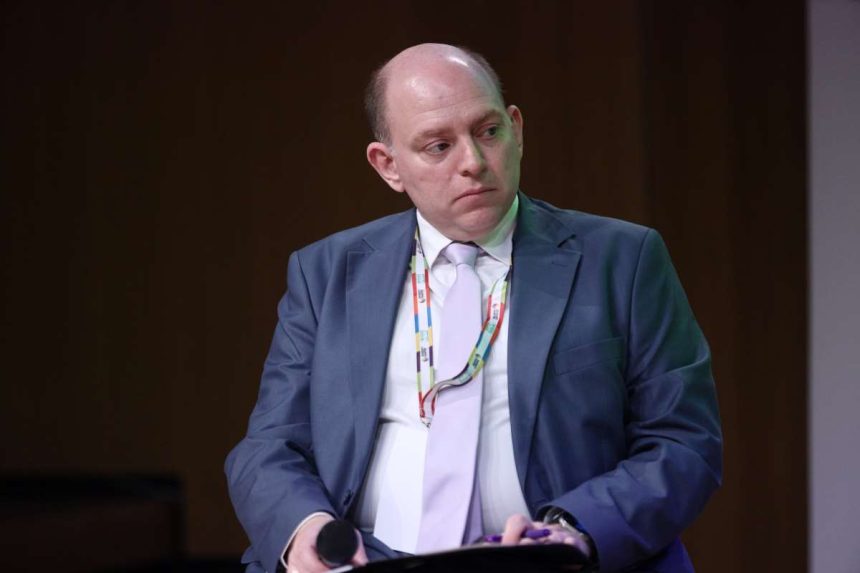The issue of equality and age discrimination, at the level of challenges and opportunities they present for inclusion, was mentioned by the participants in the relevant section during the “1st Diversity in Cities Conference” held yesterday (26/02) by KEAN, DIversity charter Greece and the Municipality of Athens at Technopolis.
Responding to questions from the coordinator, president and general director of APE-MPE, Emilios Perdikaris , Dr. Nana Tsoumaki , Education & Career Advisor, NGO 50+, emphasized that “ we should stop accepting age discrimination as normal and justified, and consider aging as normal and as something we will experience and not avoid .” As she added, we must first understand and then eliminate stereotypes and age discrimination at both extremes,” i.e., regarding young people as immature and the elderly as aging.
Ms. Tsoumaki emphasized that in order to get rid of stereotypes, we must focus on the needs that characterize different ages and to this end, ” organizations must understand the diversity of each age, there must be education ,” both for the organizations and for the individuals themselves, ” in order to include them in society and understand their characteristics .”

For her part, Eleni Theodori , a scientific associate at the GSEE Institute of Labor, stressed that ” it is important to first look at the numbers and then see what is behind them “, regarding the data on age employment, which reveals the extent of discrimination. As she emphasized, citing official data, although youth unemployment has decreased by 13%, in Greece, according to Eurostat, ” unemployment rates for the 15 to 24 age group range at 26%, from 15 to 29 years old range at 21%, the rates in the 50+ age group for people who are at risk of being out of the labor market and face the problem of long-term unemployment soar to approximately 60%, which is frighteningly high “.
However, as Ms. Theodori added, “behind these large age groups there are also people as unique individuals”, each individual who “ tries to activate and promote the entirety of their subjectivity in the entire workforce in order to remain active in the labor market ” and “ “What they constantly ask for from the labor market are the best conditions” (stability, a safe working environment, not precariousness, healthy colleague relationships). These are issues, he emphasized, that “concern the balance of professional and personal life, all of which we need to revisit because unfortunately what is currently being created in the labor market is a polarization (…) between “good” and “bad” work. ».
Panagiotis Manouris , mayor of Nea Ionia, referred to the adversities faced by municipalities regarding the initiatives they have taken for the inclusion and integration of citizens from various age groups within their bodies and organizations. As the mayor pointed out, tools should be given to local governments as each municipality should deal with its own particularities – and the legislative possibilities do not allow them to implement their programs in their entirety, such as lifelong learning programs, whose funding is segmented and does not facilitate municipalities in absorbing them. Mr. Manouris emphasized that in order to implement some of these programs, municipalities need to resort to collaborations with other bodies.
Mr. Manouris added that municipalities are seeking to implement policies that address issues of integration, gender diversity, the environment and school violence, or mainly the “55+” program, which will help prevent groups of citizens from being marginalized. The programs should be done in collaboration with others and there should be planning so that these people can integrate and enrich themselves with their experience, which is passed on as a service to citizens. As the mayor emphasized, “the issue of equality is good to show that you are showing sensitivity, but it doesn’t just happen that way.”
For his part, Giorgos Gioulos , Chairman of the Board of Directors of the Social Polycenter of ADEDY, emphasized that the observatories monitor data on equality and discrimination in the Public Sector either as a policy implementation body or as an employer and there is a paradox observed: While the Public Sector at the regulatory level will not encounter anyone who does not serve the rules that promote equality and in the context of age groups, what is observed on the contrary in competitions, such as ASEP, one sees that applications involving ages 47-50 amount to 27% and 6% to ages older than this limit, while 23% are applications for the age range under 30. The workforce in the Public Sector is aging, emphasized Mr. Gioulos, as the average age increases. by approximately 4 years, while young people do not have a job in the Public Sector as their first choice.
At the same time, Mr. Gioulos stressed that in the field of precarious and casual forms of work in the Public Sector, fixed-term contracts are observed equally for both young and older people. As he pointed out, there is also a problem in the various laws that establish an age limit, especially those that describe a specific justification for the efficiency of employees, or their physical professional performance. Mr. Goulias stressed that despite the general situation, institutional regulations are being incorporated that generally eliminate the image that the Public Sector is applying discrimination.
Regarding the question of what the interlocutors would choose to implement, if they had the opportunity, to end age discrimination, they particularly focused on the empathy and will of local government , so that we can overcome the narrow technocratic model of eligible expenditure and get closer to the citizen and person in their uniqueness, professional and advisory orientation, continuous professional training and education and apprenticeship, both at the public and private levels (according to El. Theodori).
The state should, in its administrative pyramid, treat humans as a single entity and be governed by the idea that age differences add culture and production (according to Mr. Manouris).
The state has implemented many individual programs, which, if we put them in order, will solve the problem of age inclusion (according to Ms. Tsoumaki).
While, finally, we must understand that the entire policy on this issue goes through three levels: demographic, education, insurance and pension (according to Mr. Gioulas).
source: APE-MPA











